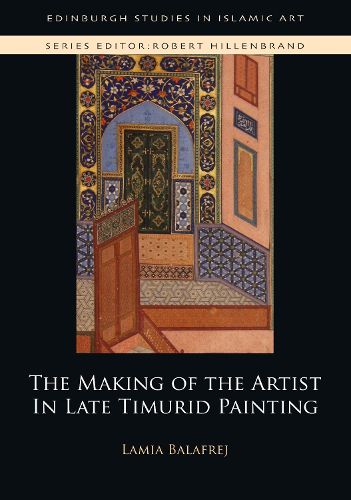The Making of the Artist in Late Timurid Painting
Lamia Balafrej

The Making of the Artist in Late Timurid Painting
Lamia Balafrej
In the absence of a tradition of self-portraiture, how could artists signal their presence within a painting? Centred on late Timurid manuscript painting (ca. 1470-1500), this book reveals that pictures could function as the painter's delegate, charged with the task of centring and defining artistic work, even as they did not represent the artist's likeness. Influenced by the culture of the majlis, an institutional gathering devoted to intricate literary performances and debates, late Timurid painters used a number of strategies to shift manuscript painting from an illustrative device to a self-reflective object, designed to highlight the artist's imagination and manual dexterity. These strategies include visual abundance, linear precision, the incorporation of inscriptions addressing aspects of the painting and the artist's signature. Focusing on one of the most iconic manuscripts of the Persianate tradition, the Cairo Bustan made in late Timurid Herat and bearing the signatures of the painter Bihzad, this book explores Persian manuscript painting as a medium for artistic performance and self-representation, a process by which artistic authority was shaped and discussed.
Order online and we’ll ship when available (11 March 2025)
Our stock data is updated periodically, and availability may change throughout the day for in-demand items. Please call the relevant shop for the most current stock information. Prices are subject to change without notice.
Sign in or become a Readings Member to add this title to a wishlist.


